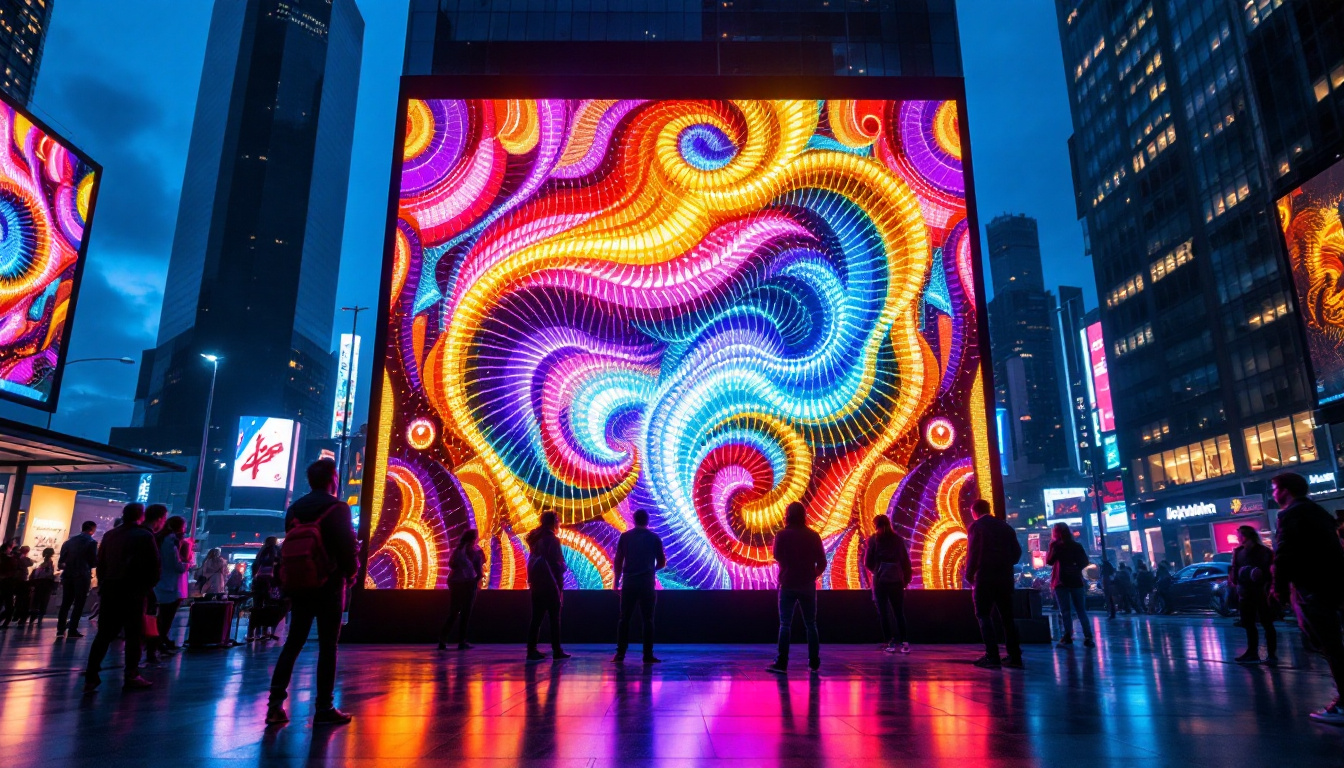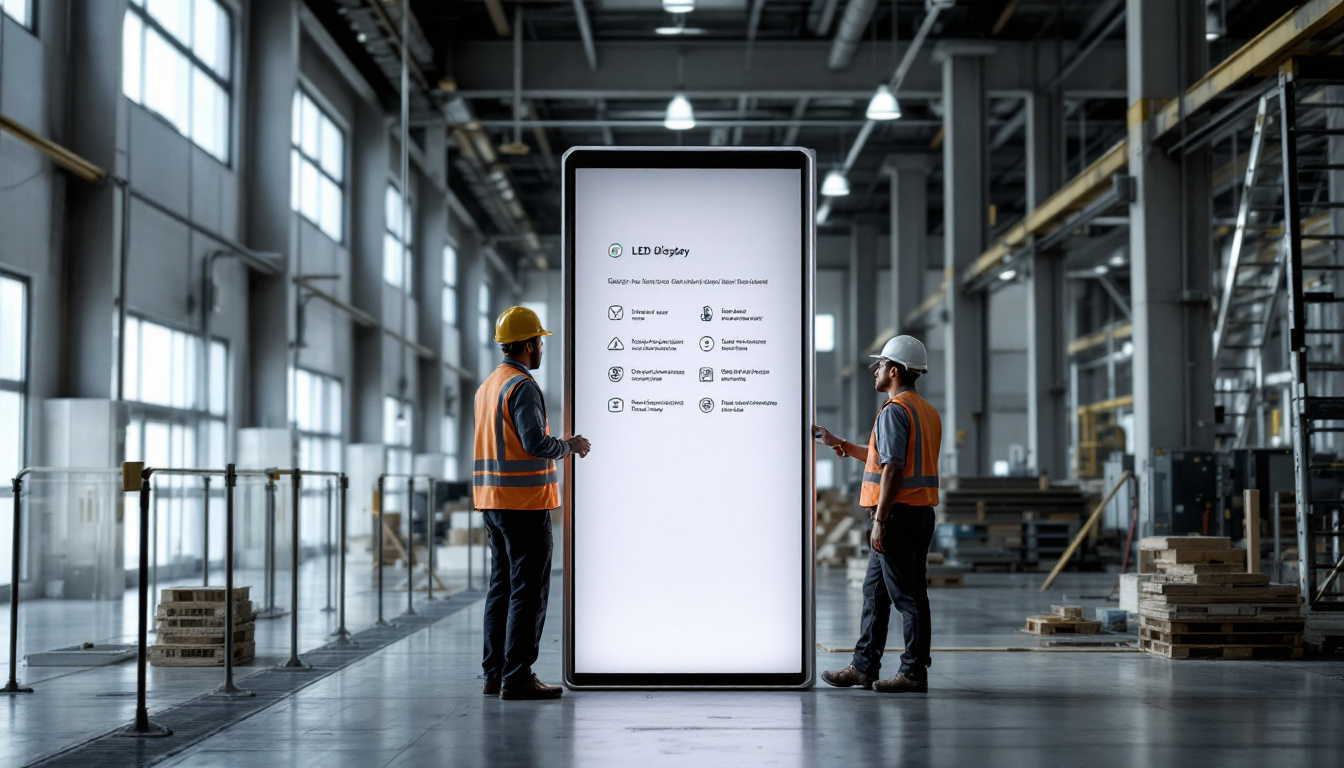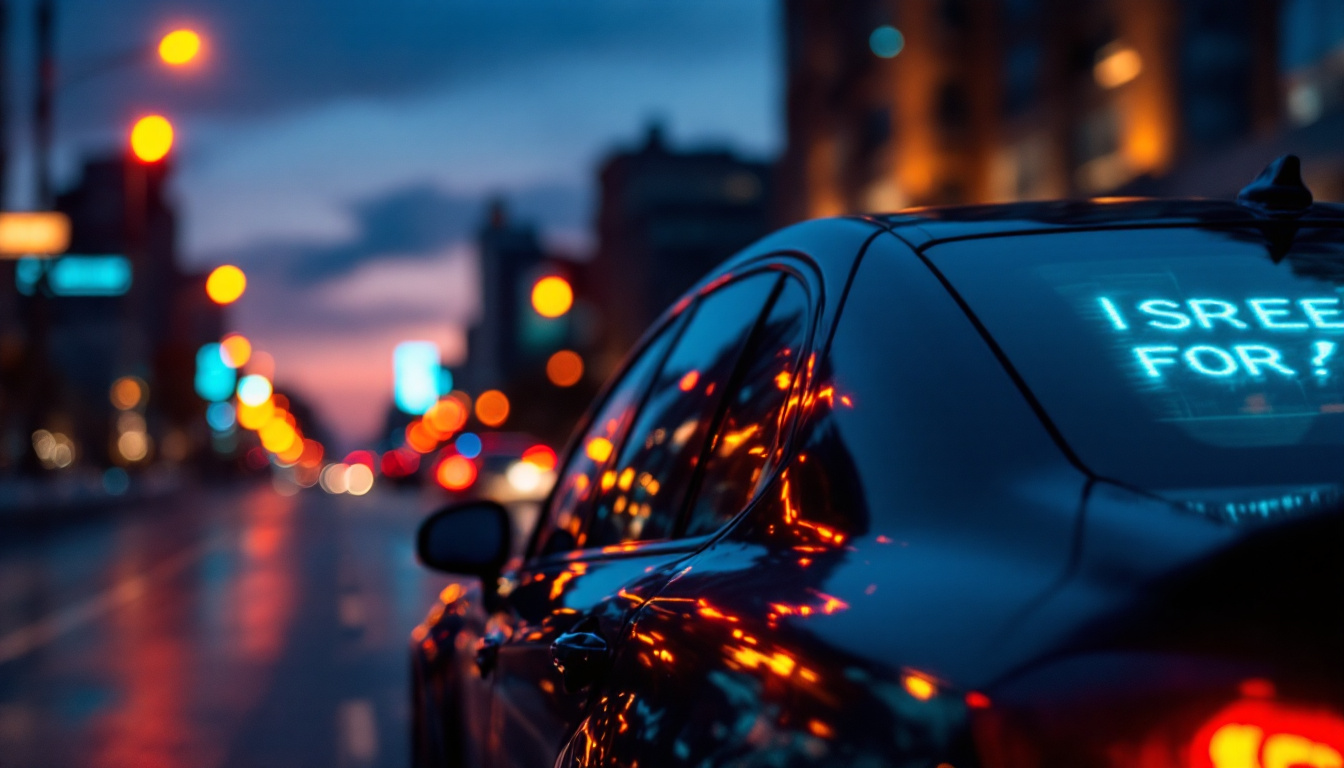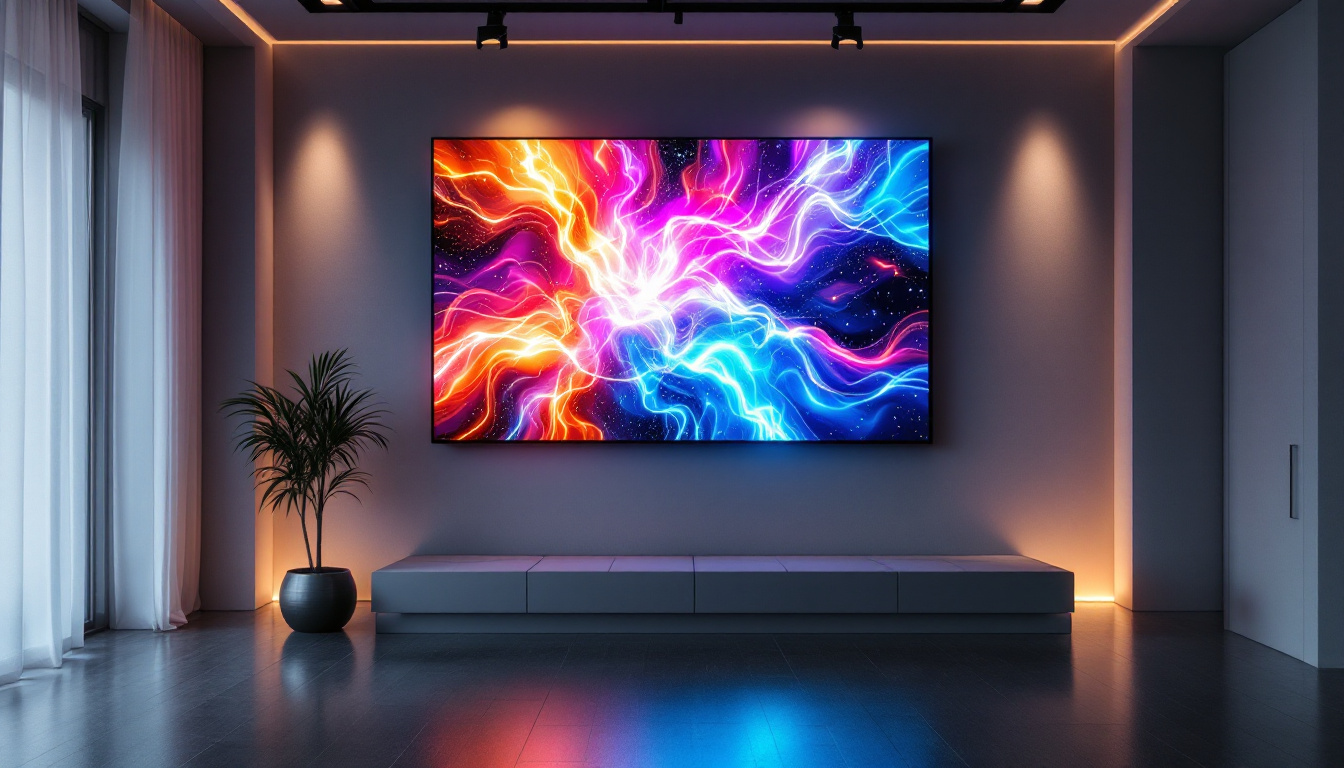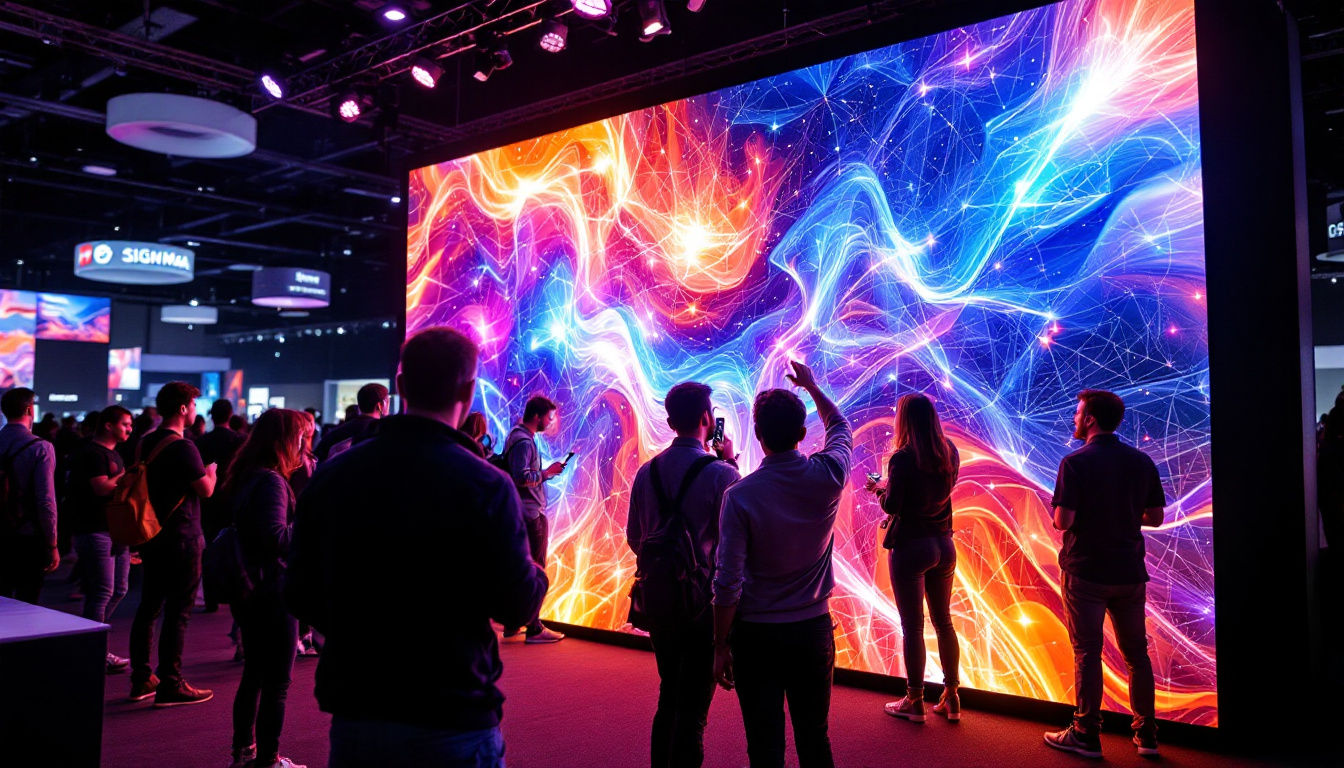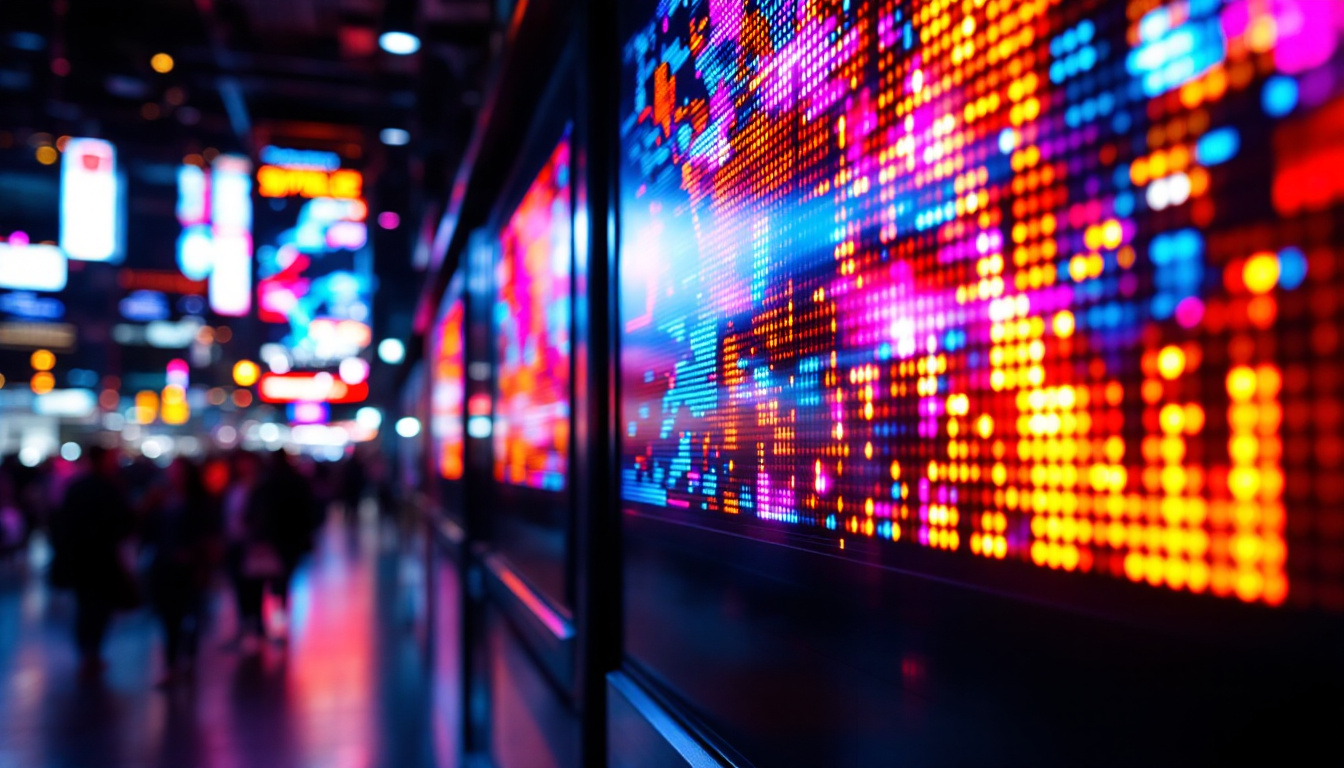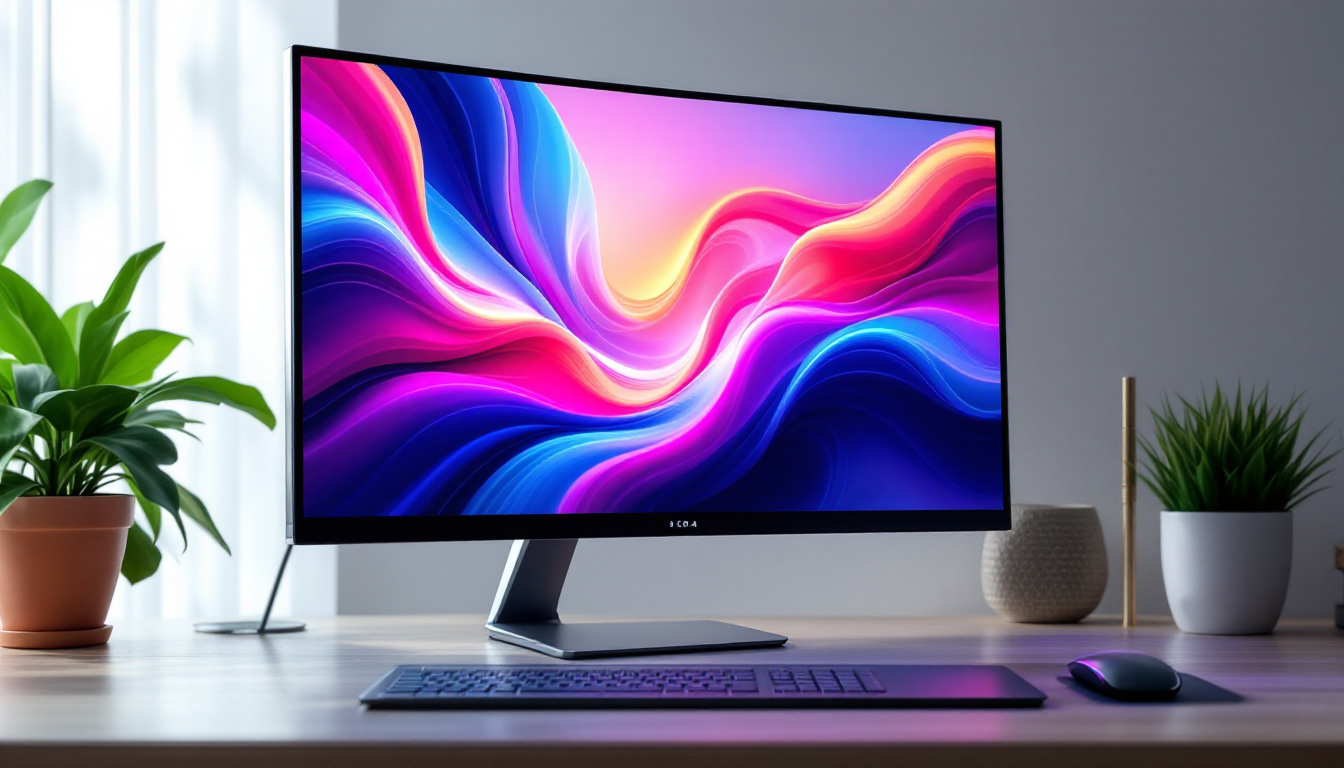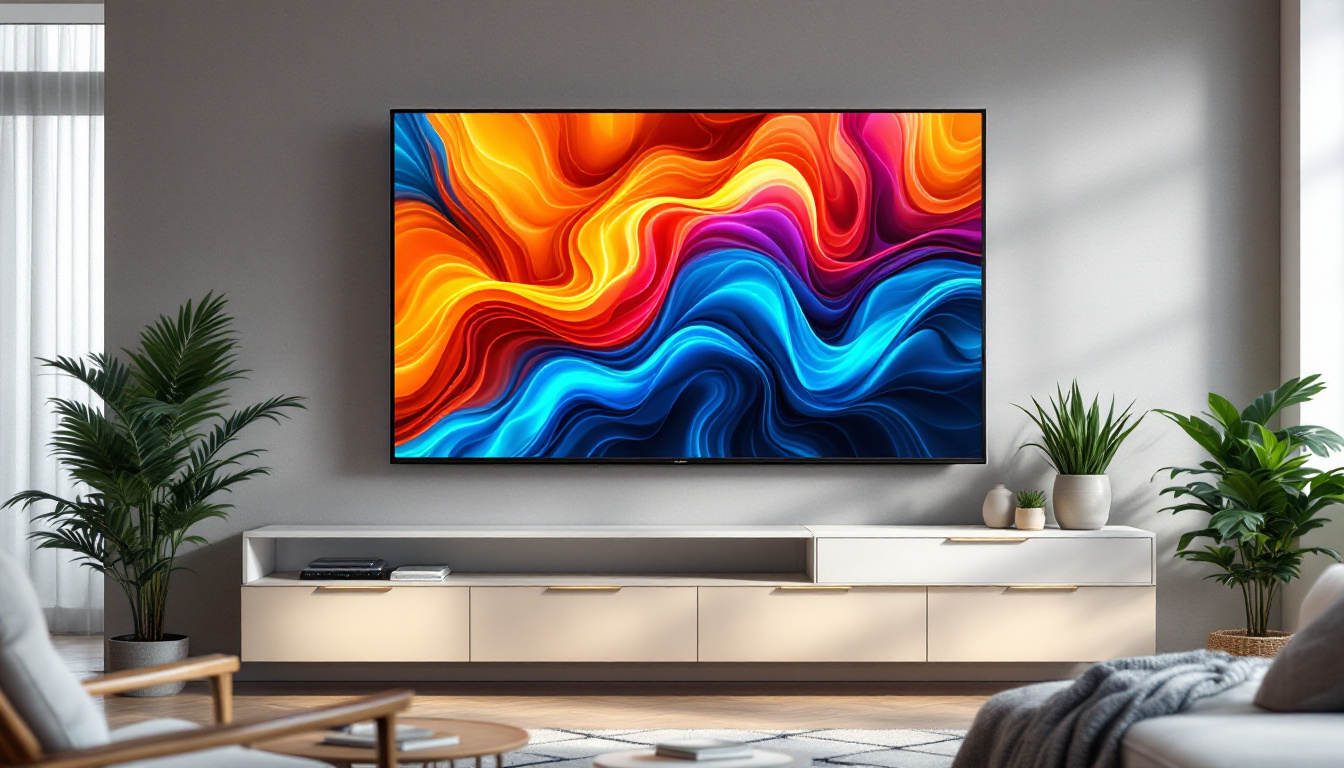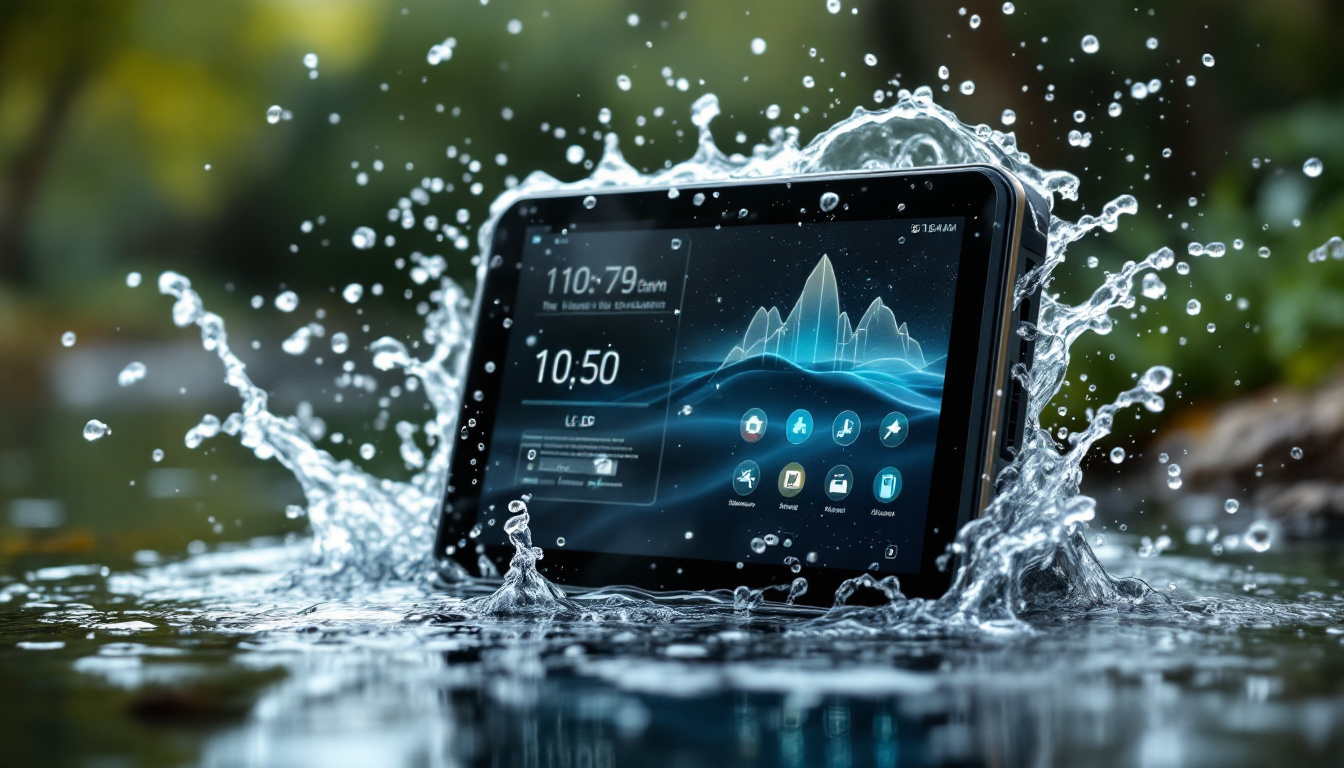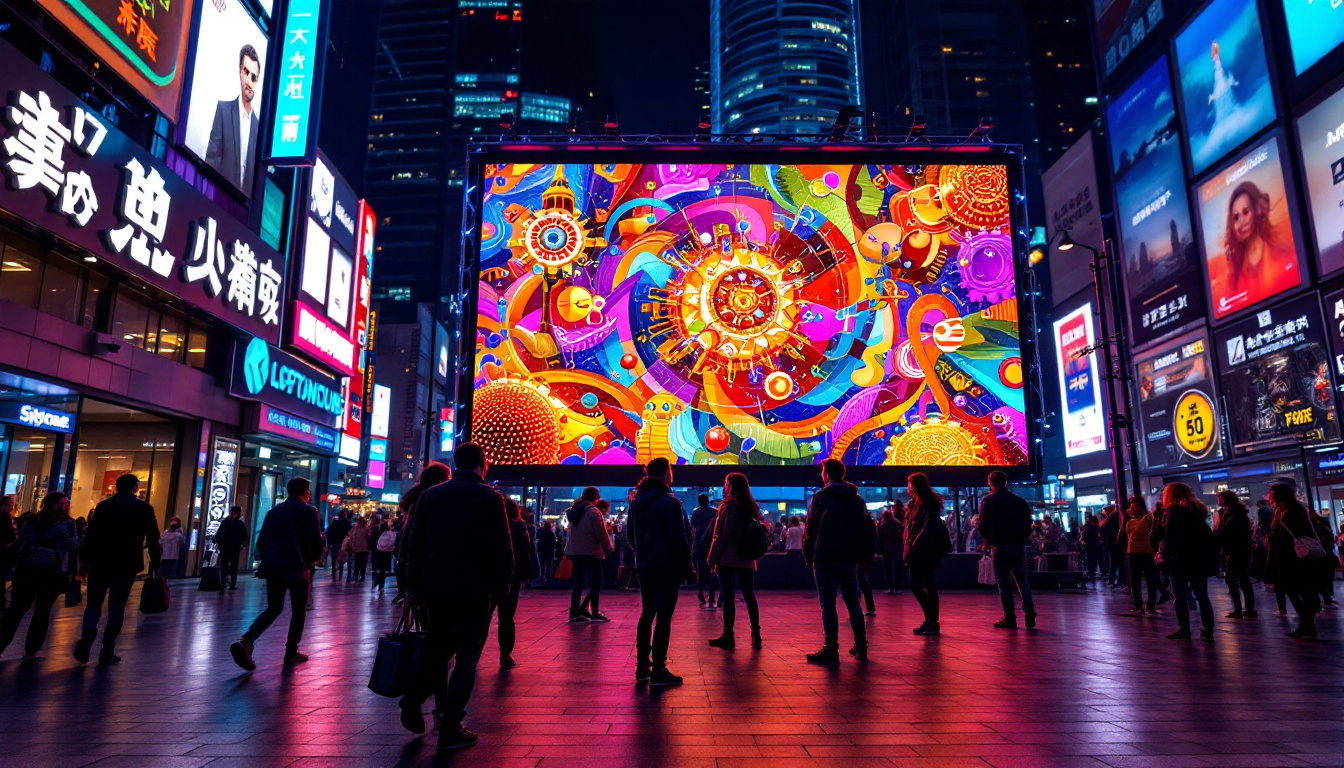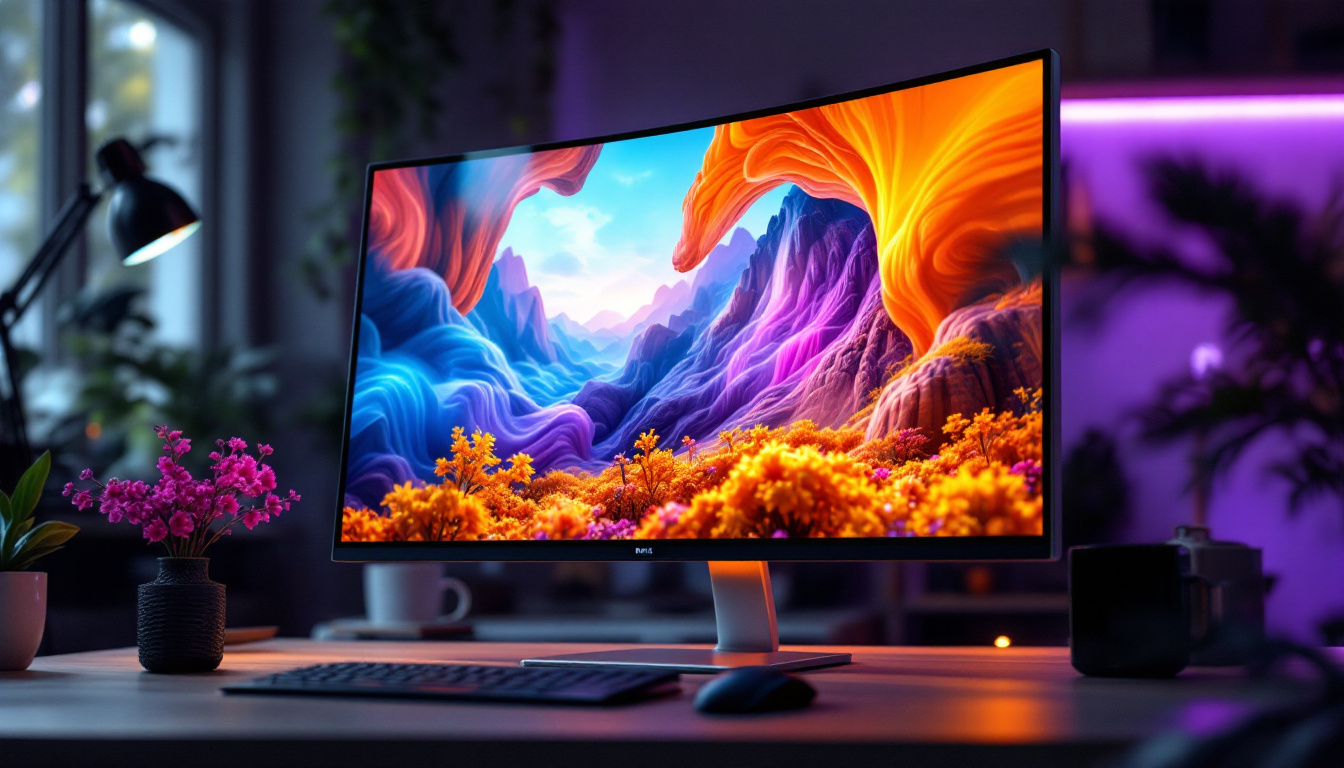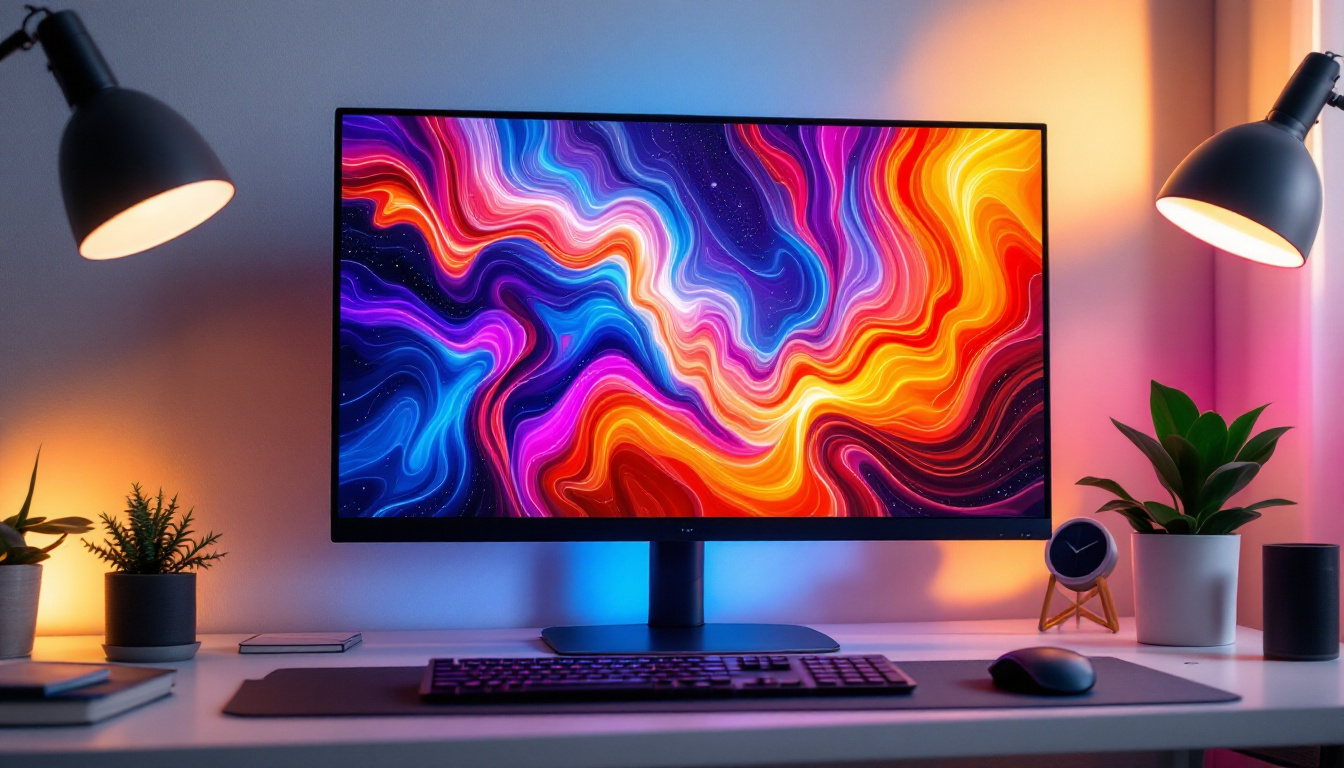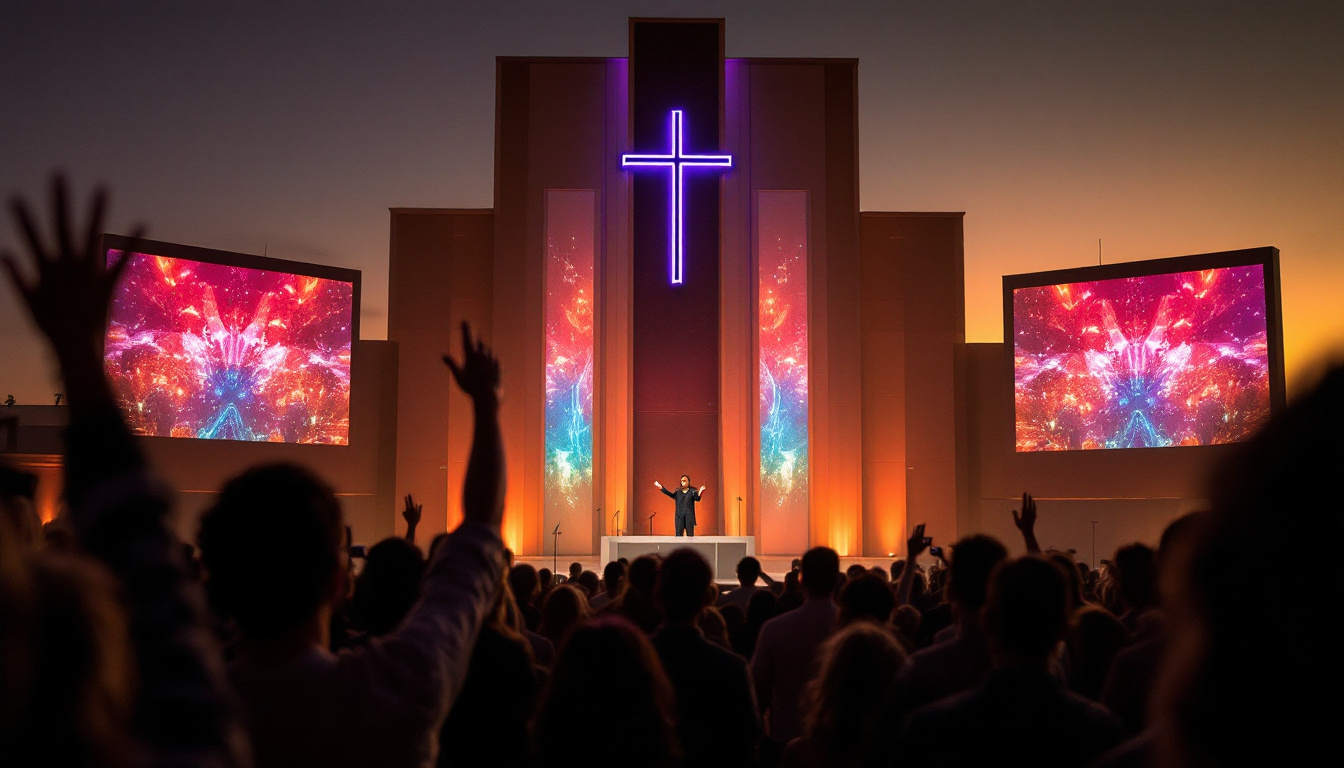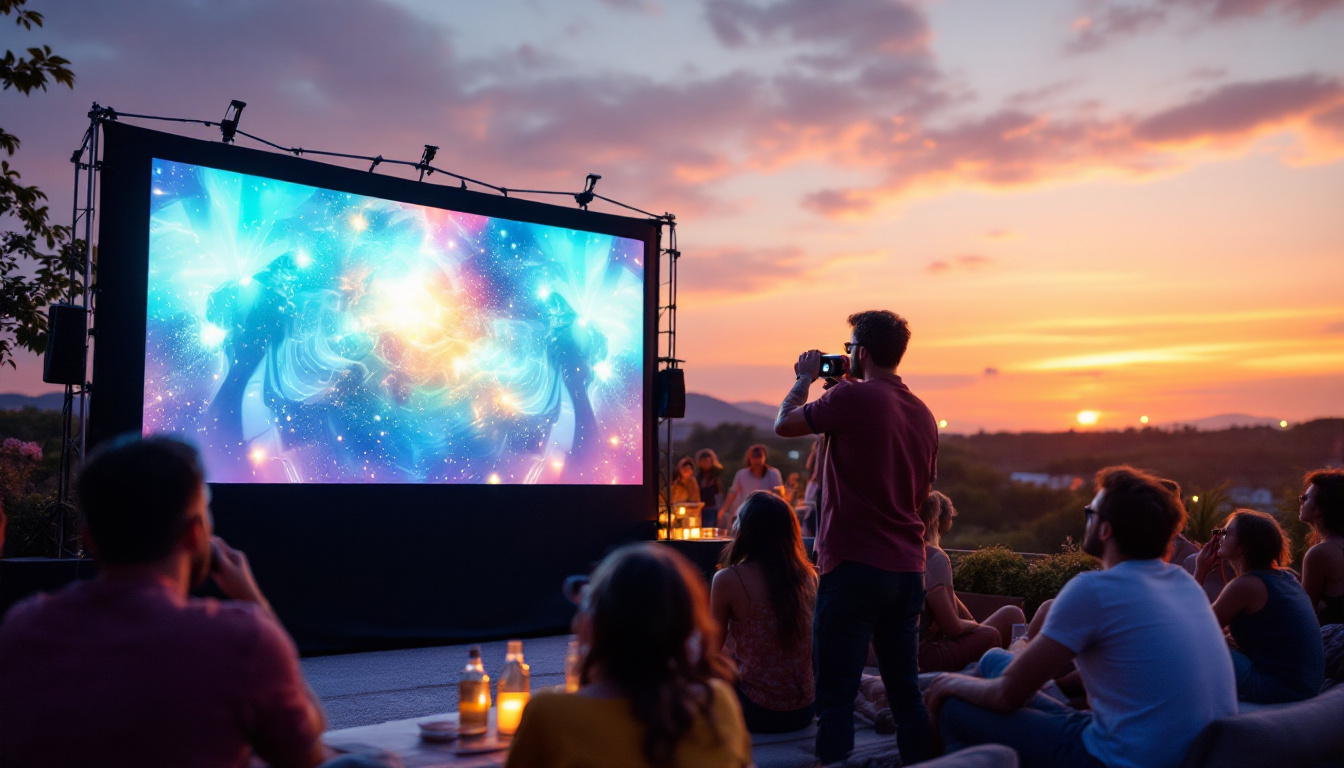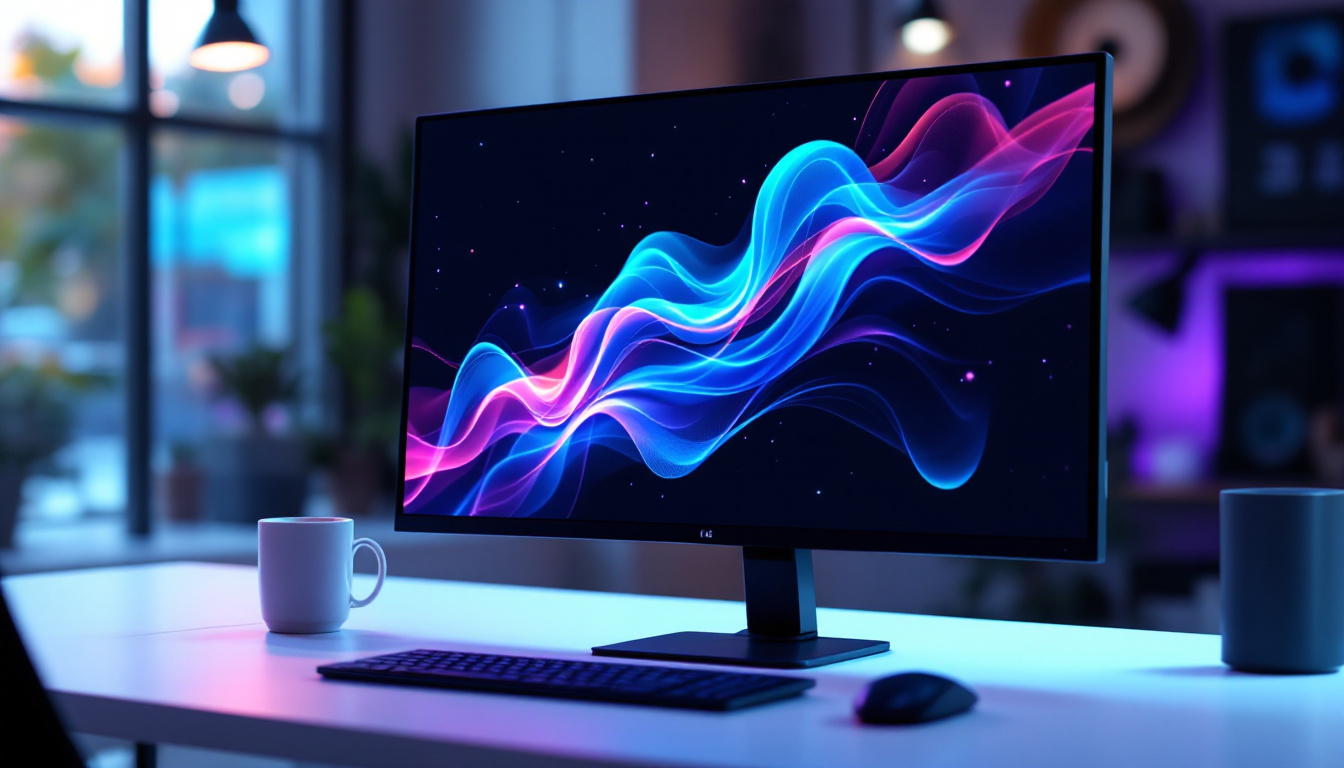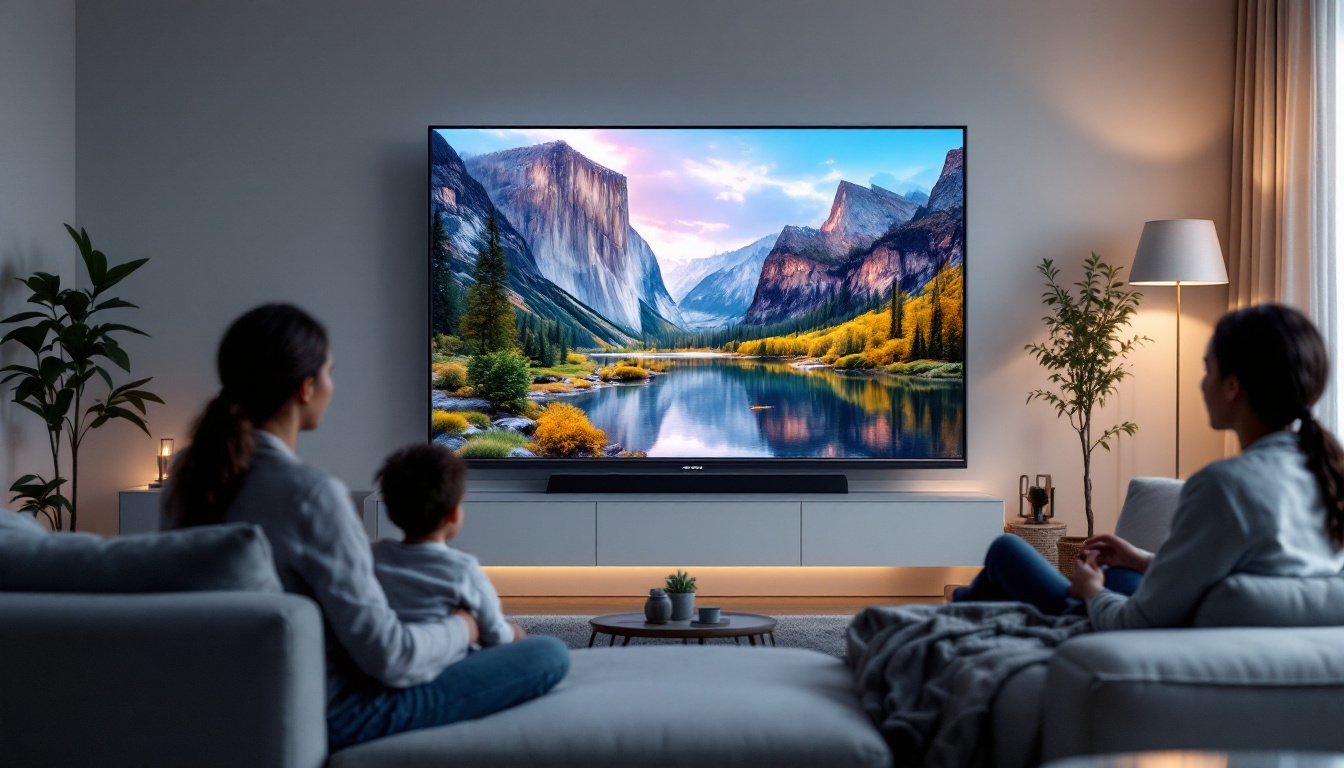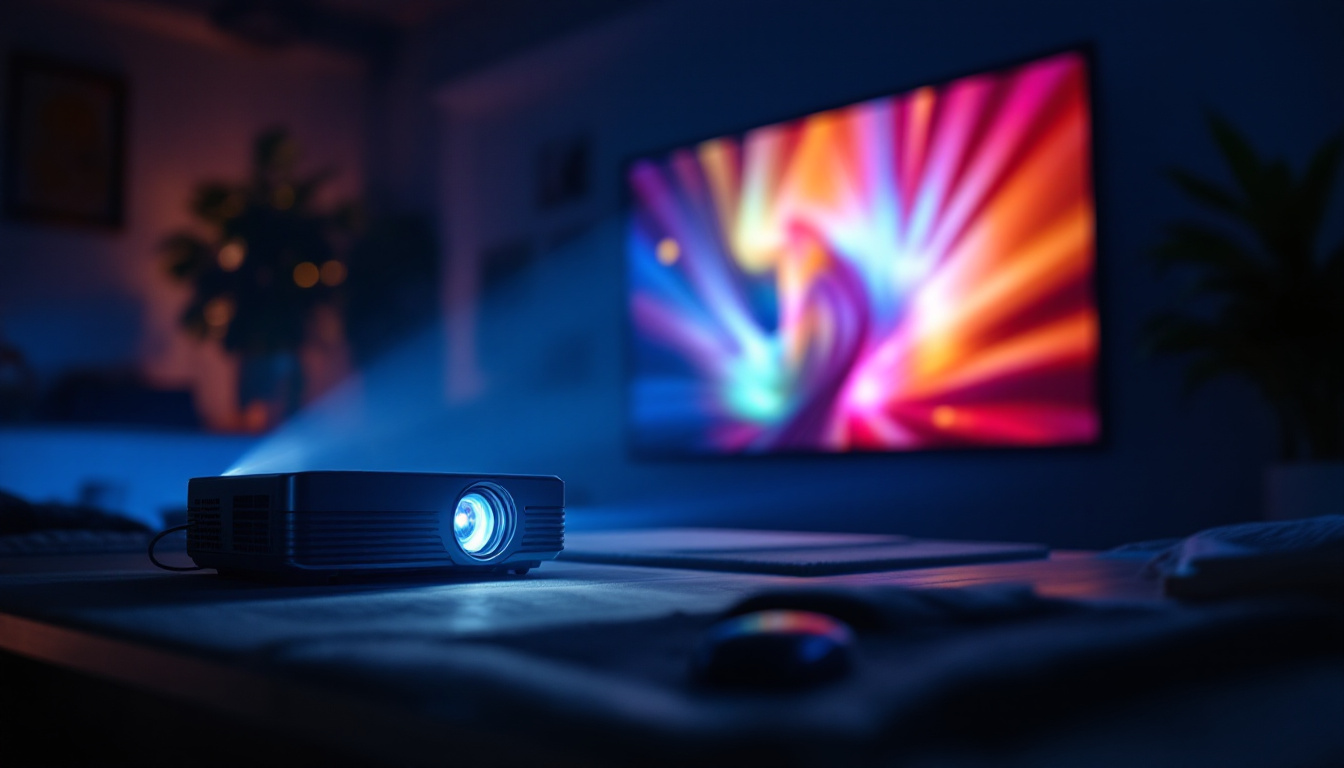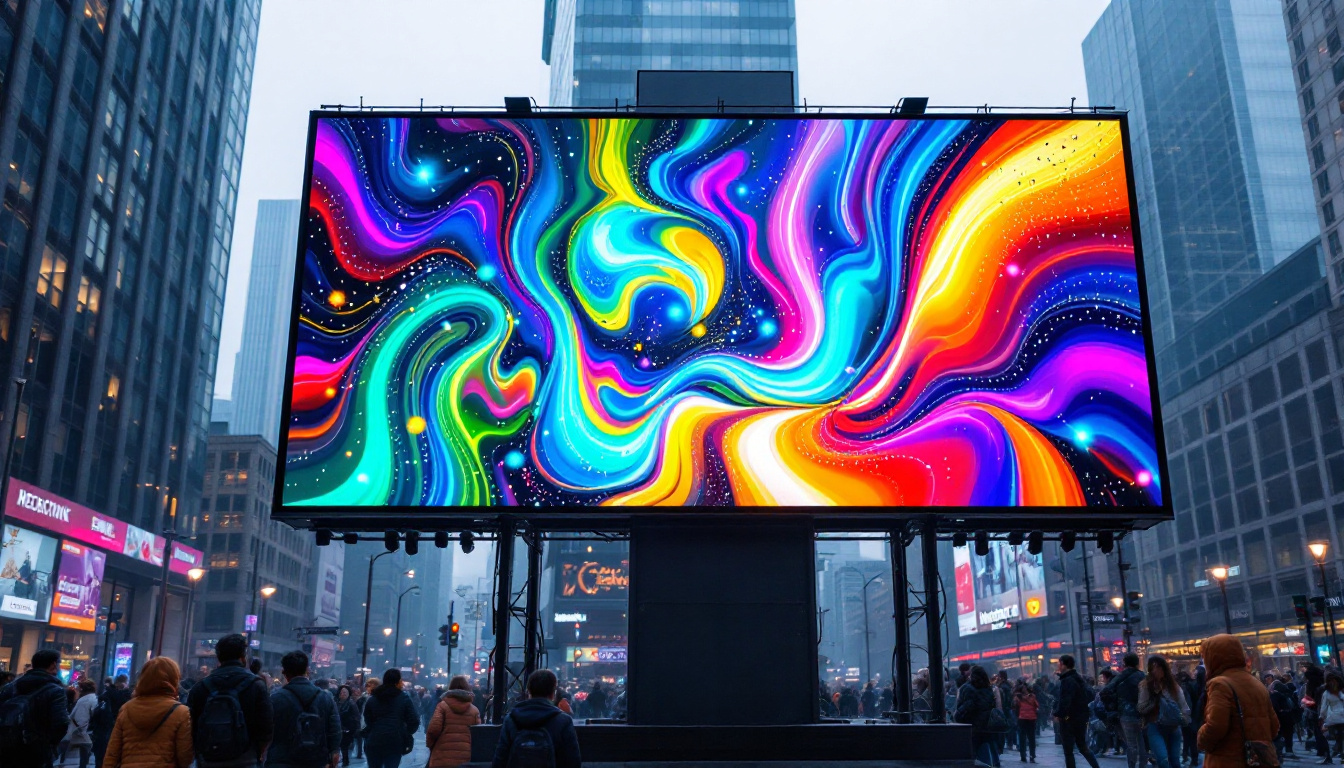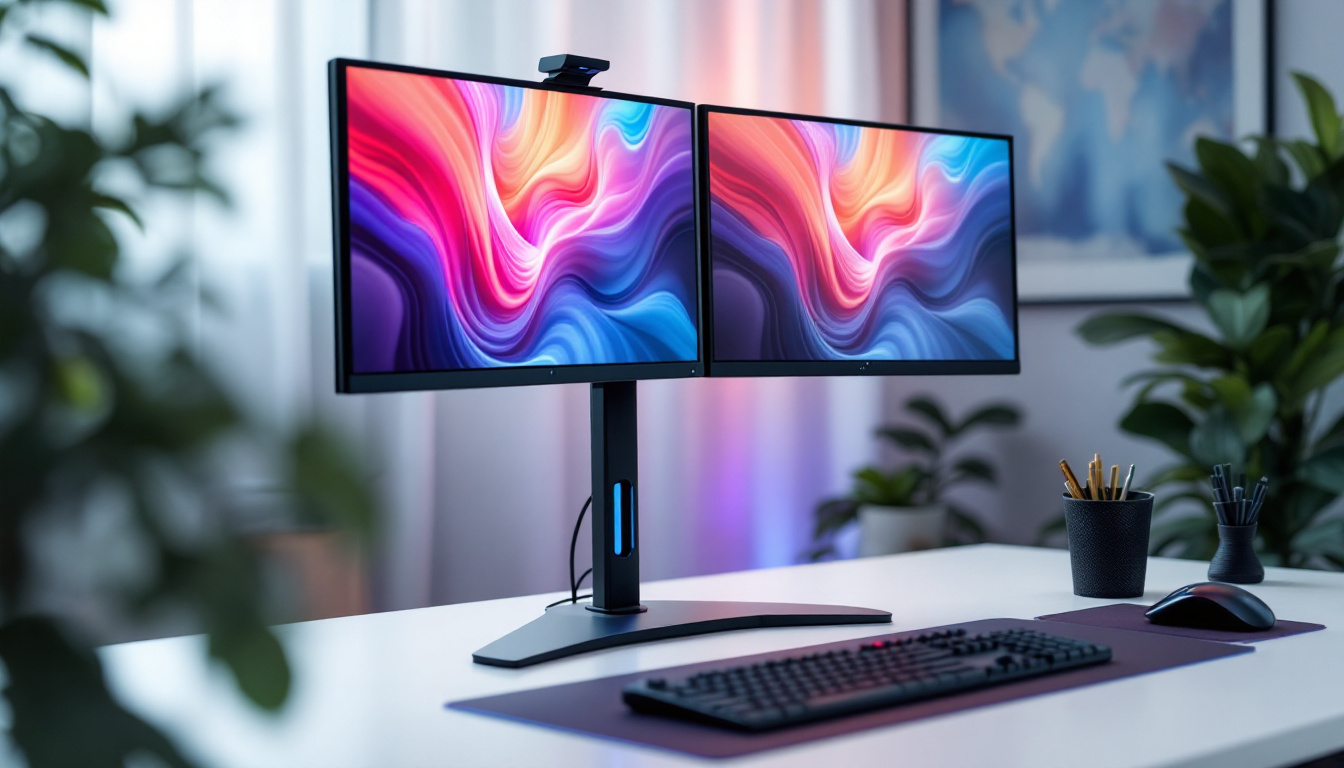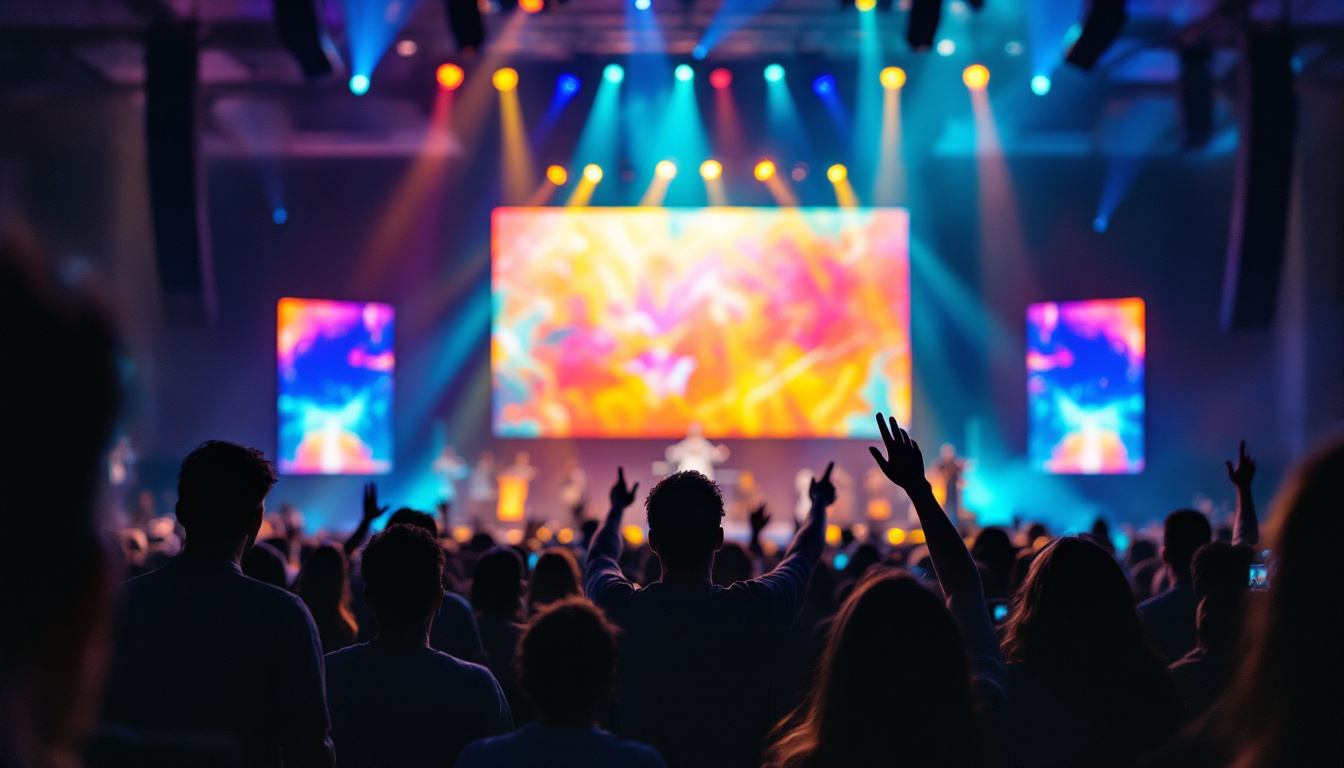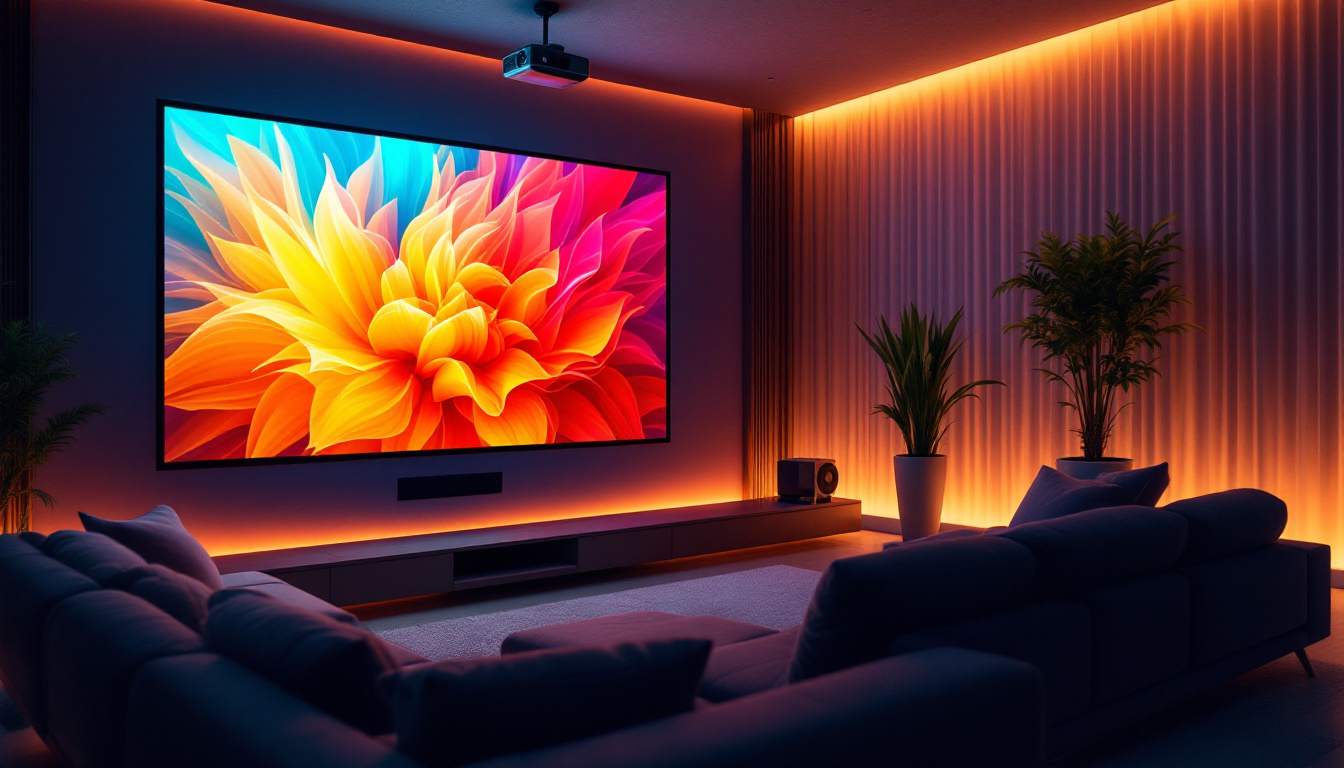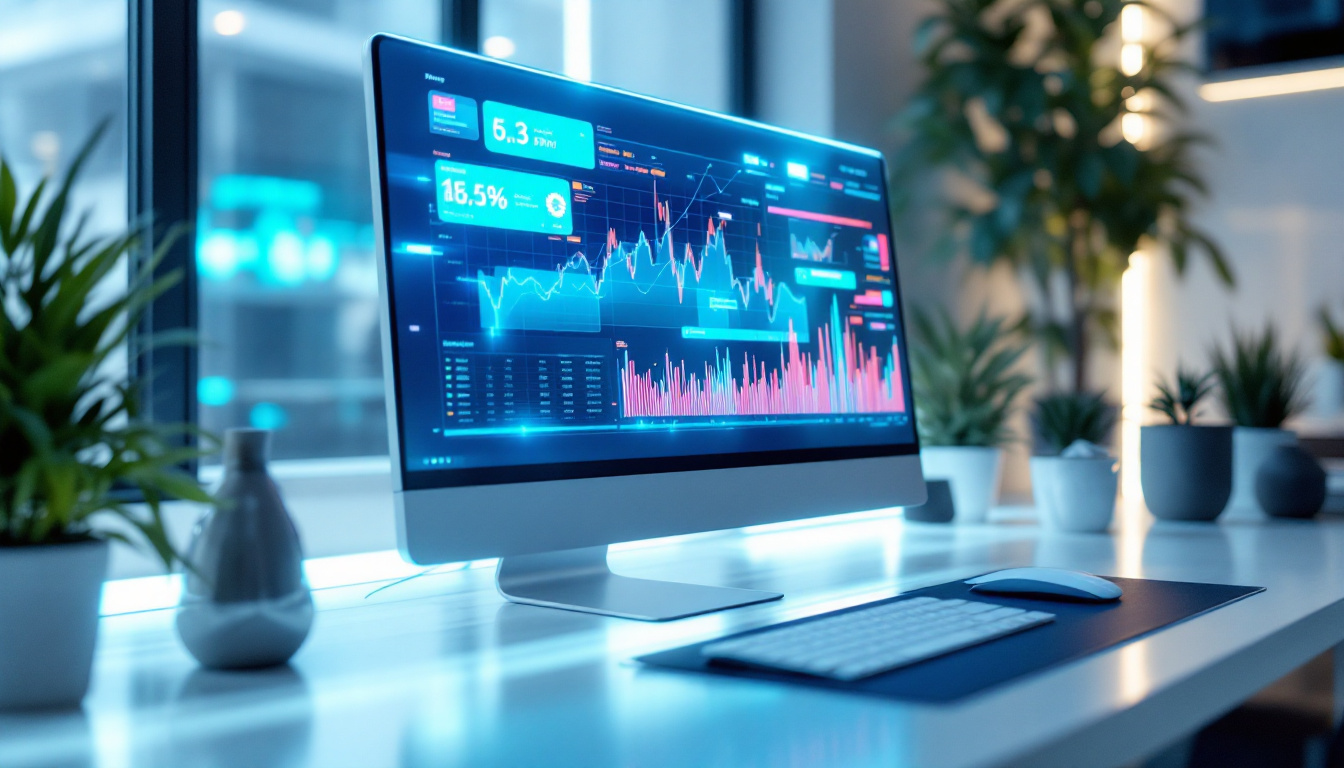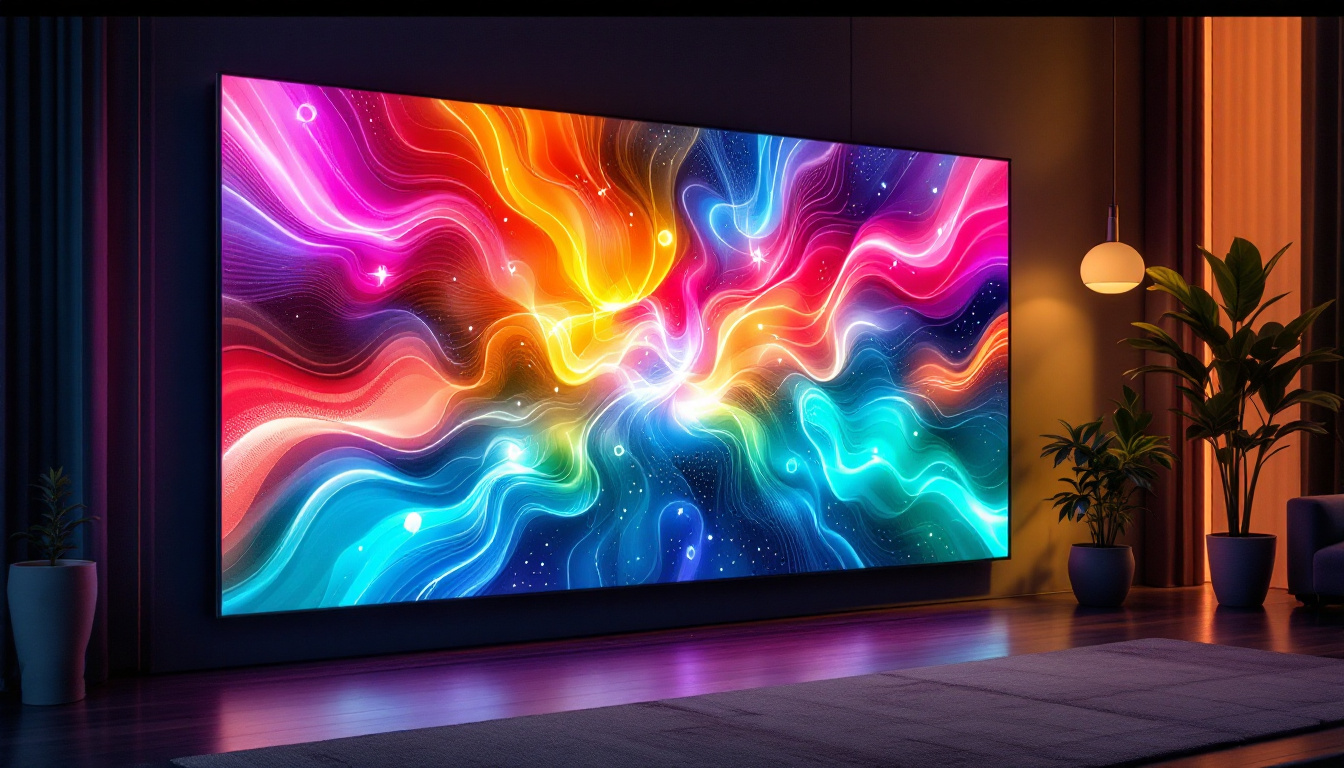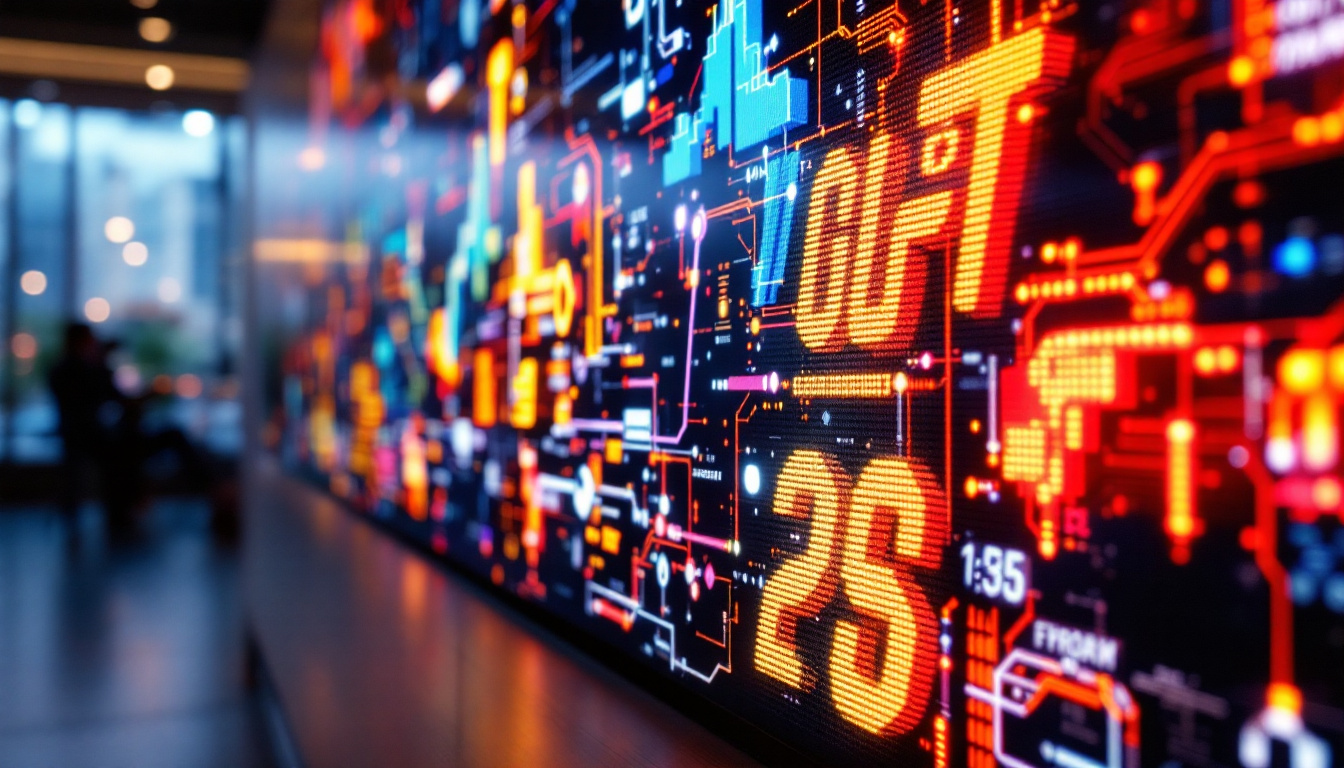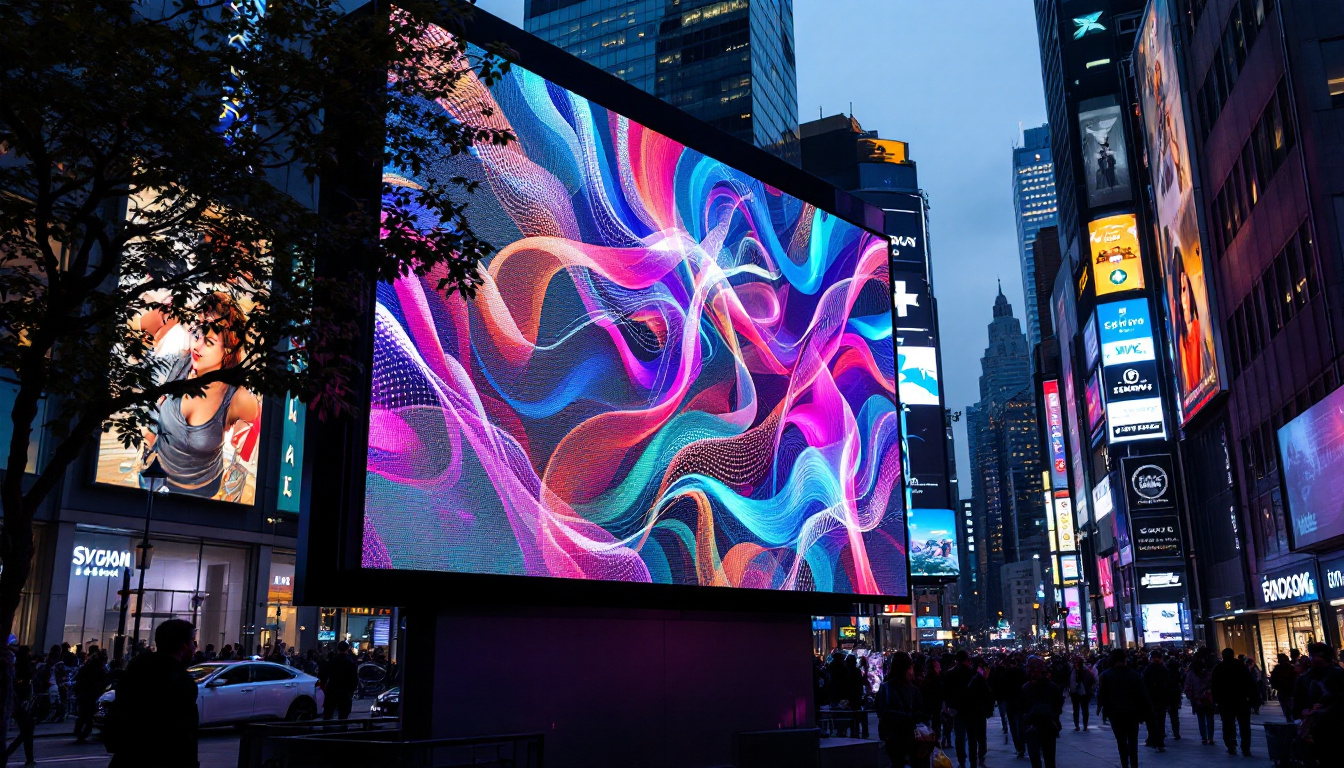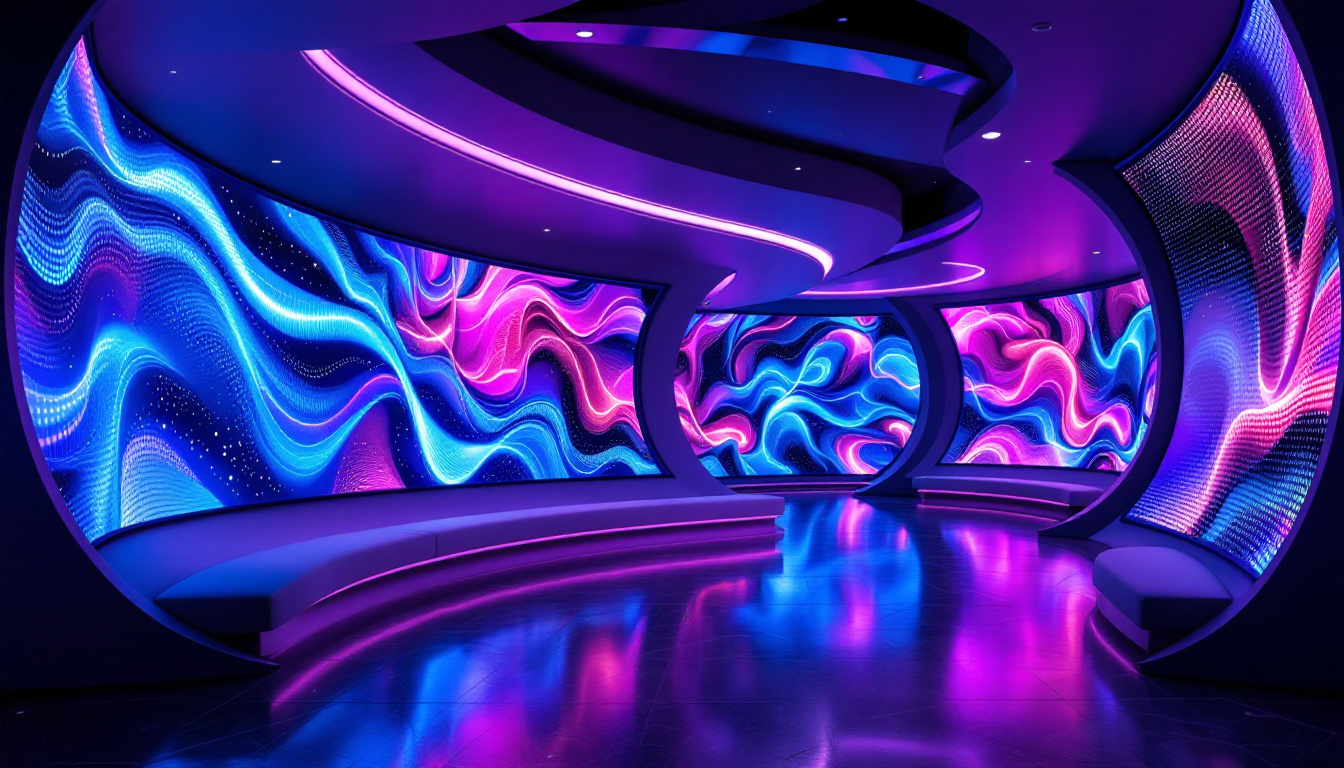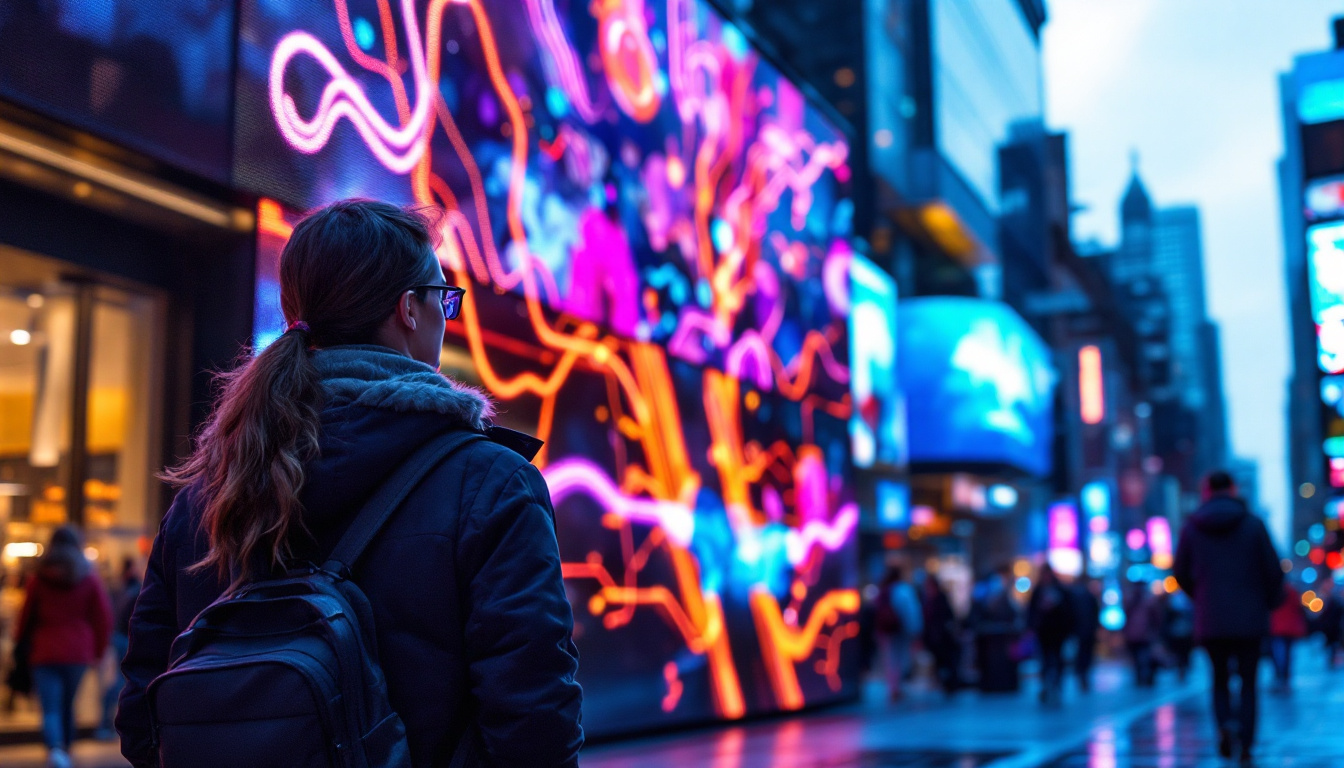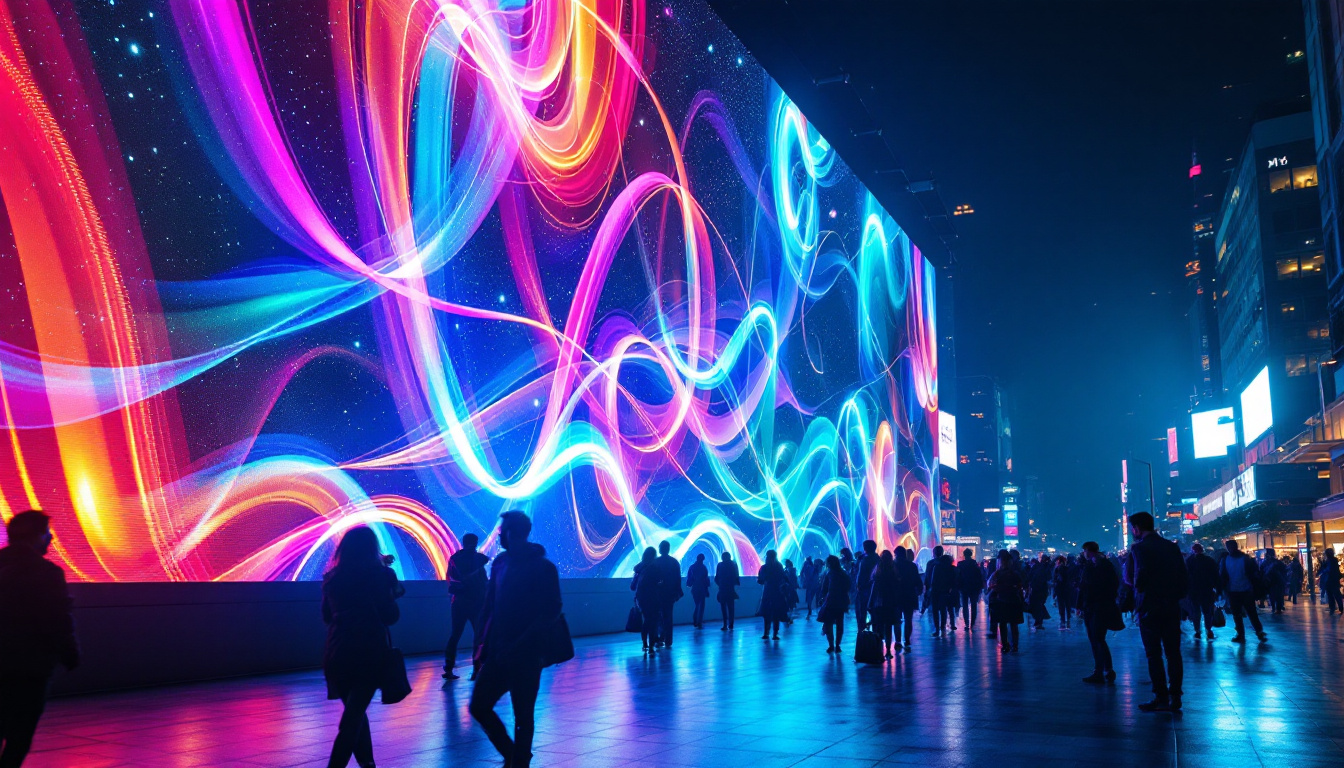In the modern world, information displays have become an integral part of our daily lives. From billboards and public transport signs to televisions and smartphones, LED displays are ubiquitous. This article delves into the intricacies of LED displays, exploring their technology, applications, and benefits.
Understanding LED Technology
Light Emitting Diodes (LEDs) are semiconductor devices that emit light when an electric current passes through them. The technology behind LEDs has evolved significantly since their inception, leading to a variety of applications in display technology. From their humble beginnings as indicator lights to their current status as a cornerstone of modern lighting and display solutions, LEDs have transformed how we perceive and interact with light.
The Science Behind LEDs
At the core of LED technology is the principle of electroluminescence. When electrons move through a semiconductor material, they release energy in the form of photons, which is perceived as light. The color of the light emitted depends on the materials used in the semiconductor, allowing for a wide spectrum of colors. This versatility not only enhances aesthetic appeal but also enables energy-efficient lighting solutions that can be tailored to specific environments and needs.
LEDs are typically classified into two categories: inorganic and organic. Inorganic LEDs are commonly used in display technologies due to their durability and efficiency. Organic LEDs (OLEDs), on the other hand, offer flexibility and can produce deeper blacks and more vibrant colors, making them popular in high-end displays. The ongoing research into new materials and structures for LEDs continues to push the boundaries of what is possible, promising even more advanced applications in the near future.
Types of LED Displays
LED displays come in various forms, each suited for different applications. The most common types include:
- Direct View LED Displays: These displays consist of individual LED modules that create images by directly emitting light. They are often used in large outdoor billboards and digital signage, capturing attention with their brightness and clarity even in direct sunlight.
- LED-backlit LCD Displays: These displays use LEDs to illuminate an LCD panel, providing better brightness and color accuracy compared to traditional fluorescent backlighting. This technology has revolutionized televisions and computer monitors, allowing for thinner designs and improved energy efficiency.
- OLED Displays: As mentioned earlier, OLED displays use organic materials to emit light. They are thinner, lighter, and capable of producing stunning visuals, making them ideal for smartphones and televisions. The self-emissive nature of OLEDs allows for pixel-level control, resulting in true blacks and exceptional contrast ratios that enhance the viewing experience.
In addition to these common types, there are also specialized LED displays, such as transparent OLEDs and microLEDs. Transparent OLEDs are gaining traction in retail and advertising, allowing for captivating displays that can blend seamlessly into their surroundings. MicroLED technology, which uses microscopic LEDs to create images, promises even greater efficiency and brightness, along with the potential for modular displays that can be customized to any size or shape. As the demand for high-quality visual experiences continues to grow, the evolution of LED technology remains a focal point for innovation in the display industry.
Applications of LED Displays
The versatility of LED displays has led to their widespread adoption across various industries. From advertising to entertainment, the applications are vast and varied.
Advertising and Marketing
One of the most prominent uses of LED displays is in advertising. Digital billboards and signage can capture attention with vibrant colors and dynamic content. Advertisers can easily update messages in real-time, allowing for targeted marketing strategies that can adapt to audience preferences and behaviors.
Furthermore, LED displays can be used for interactive advertising, where consumers can engage with the content through touch or motion sensors. This level of interactivity enhances customer experience and can lead to increased brand loyalty. For example, brands can create gamified experiences that encourage participation, such as contests or quizzes displayed on LED screens, making the advertising experience more engaging and memorable.
Transportation and Public Information
LED displays play a crucial role in the transportation sector. They are commonly used in train stations, airports, and bus terminals to provide real-time information about arrivals, departures, and delays. These displays are designed to be highly visible, ensuring that travelers can easily access important information.
Additionally, LED displays are employed in traffic management systems. Variable message signs (VMS) use LEDs to convey important messages to drivers, such as road closures, speed limits, and accident alerts, contributing to improved road safety. Beyond just traffic updates, these displays can also provide environmental information, such as air quality indices, helping to raise awareness about local conditions and encouraging eco-friendly practices among commuters.
Entertainment and Events
In the realm of entertainment, LED displays have transformed the way events are experienced. Concerts, sports events, and festivals often utilize large LED screens to enhance the audience’s experience. These displays can broadcast live feeds, graphics, and animations, creating an immersive environment.
Moreover, LED technology is also prevalent in the film industry. LED walls are used in virtual production, allowing filmmakers to create realistic backgrounds that change dynamically based on the scene being filmed. This innovation has revolutionized traditional filmmaking techniques. Additionally, LED displays are increasingly being integrated into theme parks and attractions, where they can create stunning visual effects that enhance rides and experiences, captivating visitors with breathtaking imagery that complements the storytelling of the attractions.
Benefits of LED Displays
The advantages of LED displays extend beyond their visual appeal. Their efficiency and versatility contribute to their popularity across various sectors.
Energy Efficiency
One of the most significant benefits of LED technology is its energy efficiency. Compared to traditional incandescent and fluorescent lighting, LEDs consume significantly less power. This not only reduces operational costs but also minimizes the environmental impact, making them a more sustainable choice.
Furthermore, LED displays have a longer lifespan, often lasting tens of thousands of hours. This longevity translates into lower maintenance costs and reduced waste, as fewer displays need to be replaced over time.
High Brightness and Visibility
LED displays are known for their high brightness levels, making them suitable for both indoor and outdoor applications. Even in direct sunlight, LED displays maintain visibility, ensuring that content remains clear and legible.
This characteristic is particularly beneficial for advertising and public information displays, where visibility is crucial for effective communication. The ability to produce vibrant colors and sharp images further enhances the overall viewing experience.
Flexibility and Customization
Another advantage of LED displays is their flexibility in design and customization. They can be manufactured in various shapes and sizes, allowing for creative installations that can fit any space. This adaptability makes them ideal for unique architectural designs and artistic displays.
Moreover, LED technology supports a range of content formats, from static images to dynamic videos, providing endless possibilities for creative expression. This versatility is a significant factor in their widespread adoption across different industries.
Challenges and Considerations
While LED displays offer numerous benefits, there are also challenges and considerations that need to be addressed. Understanding these factors is essential for making informed decisions regarding their use.
Initial Costs
The initial investment for LED display technology can be higher than traditional display options. Although the long-term savings on energy and maintenance can offset these costs, businesses must consider their budget and return on investment when choosing to implement LED displays.
However, as technology advances and production processes become more efficient, the costs associated with LED displays are gradually decreasing, making them more accessible to a broader range of consumers and businesses.
Environmental Impact
While LED displays are more energy-efficient than traditional lighting, the environmental impact of their production and disposal cannot be overlooked. The materials used in LED manufacturing, such as rare earth elements, raise concerns about sustainability and resource depletion.
Moreover, improper disposal of LED displays can lead to electronic waste, which poses environmental hazards. It is crucial for manufacturers and consumers alike to consider recycling options and sustainable practices when dealing with LED technology.
The Future of LED Displays
The future of LED displays looks promising, with ongoing advancements in technology and applications. As industries continue to innovate, the potential for LED displays to enhance communication and engagement is limitless.
Technological Advancements
Emerging technologies such as microLED and MiniLED are set to revolutionize the display industry. These advancements promise even higher resolutions, improved color accuracy, and enhanced energy efficiency. MicroLED displays, in particular, offer the potential for self-emissive pixels, resulting in deeper blacks and greater contrast ratios.
Additionally, the integration of artificial intelligence (AI) and machine learning into display technology can lead to smarter, more adaptive displays that can personalize content based on viewer preferences and behaviors. This level of customization could redefine how information is presented and consumed.
Integration with Smart Technologies
The rise of smart technologies and the Internet of Things (IoT) is also influencing the future of LED displays. As more devices become interconnected, LED displays can serve as dynamic interfaces that provide real-time information and enhance user experiences.
For instance, smart cities are increasingly adopting LED displays for public information systems that can adapt to changing conditions, such as weather or traffic patterns. This integration not only improves efficiency but also enhances the overall quality of life for residents.
Conclusion
LED displays have fundamentally changed the way information is conveyed and consumed. Their versatility, energy efficiency, and vibrant visuals make them an ideal choice for a wide range of applications. As technology continues to evolve, the potential for LED displays to innovate and enhance communication remains vast.
While challenges such as initial costs and environmental impact must be addressed, the benefits of LED displays far outweigh the drawbacks. As industries embrace these advancements, the future of LED technology promises to be bright, paving the way for new opportunities in information display.
Discover LumenMatrix’s Innovative LED Solutions
Ready to elevate your visual communication with the latest in LED display technology? LumenMatrix is at the forefront of creating immersive and dynamic visual experiences. Whether you need an Indoor LED Wall Display for your corporate headquarters, an Outdoor LED Wall Display for impactful advertising, or any of our specialized solutions like Vehicle LED Displays, LED Sports Displays, or Custom LED Displays, we have the expertise to bring your vision to life. Embrace the future of display technology and check out LumenMatrix LED Display Solutions to see how we can help your business shine brighter.

